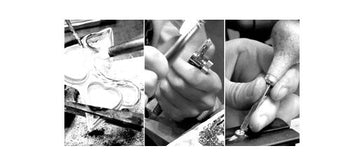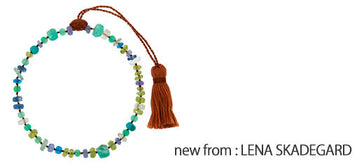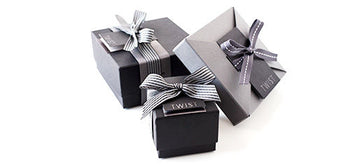gold:
A metallic chemical element with the symbol Au and the atomic number of 47.
Gold is the most malleable of all metals. One gram can be hammered into 1 square meter and one ounce can be pounded into 300 square feet.
Chemically, it is unaffected by air, moisture and most corrosive agents.
Gold standards have been the most common basis for monetary policies since early history, only replaced by flat currency during the 20th century.
Gold has been highly sought after for jewelry making since the beginning of history.
In medieval times, gold was believed to be beneficial to one's health.
It can symbolize power, wealth, strength, happiness, warmth, love, hope, optimism, justice, balance, summer, sun and harvest.
karat:
24 karat gold (24K) is pure gold.
22 karat gold (22K) is 22 parts gold and 2 parts another metal or metals, making it 91% gold.
18 karat gold (18K) is 18 parts gold and 4 parts another metal or metals, making it 75% gold.
14 karat gold (14K) is 14 parts gold and 10 parts another metal or metals, making it 58.3% gold.
10 karat gold (10K) is 10 parts gold and 14 parts another metal or metals, making it 41.7% gold. This is the minimum karat designation for a metal to be called gold in the US.
Base metals often alloyed with gold to make it harder include silver, copper or palladium.
white gold:
White gold is an alloy of another white metal (like nickel or palladium) with gold. Its purity is signified in karats in the same manner of yellow gold.To maintain and / or enhance the white color of this gold, it is often plated with rhodium, a shiny white metal with extreme hardness. This coating, however, does wear off in time revealing the original color of the white gold.
rose / pink gold:
This gold has a pinkish-rose color and is an alloy of gold and other metals - usually copper. The highest karat weight for rose gold is 22K and is referred to as crown gold. The higher the percentage of copper, the more intense the rose / pink / red tone will be. Eighteen karat rose gold is 75% gold and 25% copper.
green gold:
The green tone appears when copper is left out of the alloy and is, instead, a mixture of gold and silver. Cadmium can also be added to intensify the green color.
gold variations:
gold plate:
Created by an electro-chemical process, gold plating is the term used when a non-precious base metal (such as zinc, nickel, silver or copper) is covered with at thin layer of gold.
The gold usually used in plating is 10K and most often, it is attached to silver. While the metals will react to one another, the silver is frequently plated with copper first. But still, there can be a slight reaction when the silver or other base metal reaches the surface, which may eventually lead to a discoloration. It is not the gold coming off, but the other metals passing through the gold to the surface.
gold fill:
This method of creating a gold surface if much more durable than gold plating.
Also known as 'rolled gold', it is composed of solid layers of gold bonded with heat and pressure to a base metal such as brass.
The gold content in these pieces must be 1/20 or 5% of the total weight.
gold vermeil:
This is when sterling silver is covered in a coat of 14K gold. In order for something to be considered gold vermeil, the gold must be at least 10K and at least 2.5mm thick.
Vermeil can be created by fire-gilding or electrolysis.
The difference between gold vermeil and gold filled is that vermeil uses sterling silver as its base metal.
It can be comparable to pure gold in appearance, but since there is a large quantity of sterling silver it is much more affordable.
It is a great alternative for those with metal sensitivities since, by law, it cannot contain any other metals.
gilver:
A special alloy created and trademarked by Yossi Harari.
It is a mixture of 24K gold (25%) and sterling silver (75%).
The alloy is oxidized to give it an edgy, black-pewter color.
The gilver creates a stronger base into which stones can be set.









